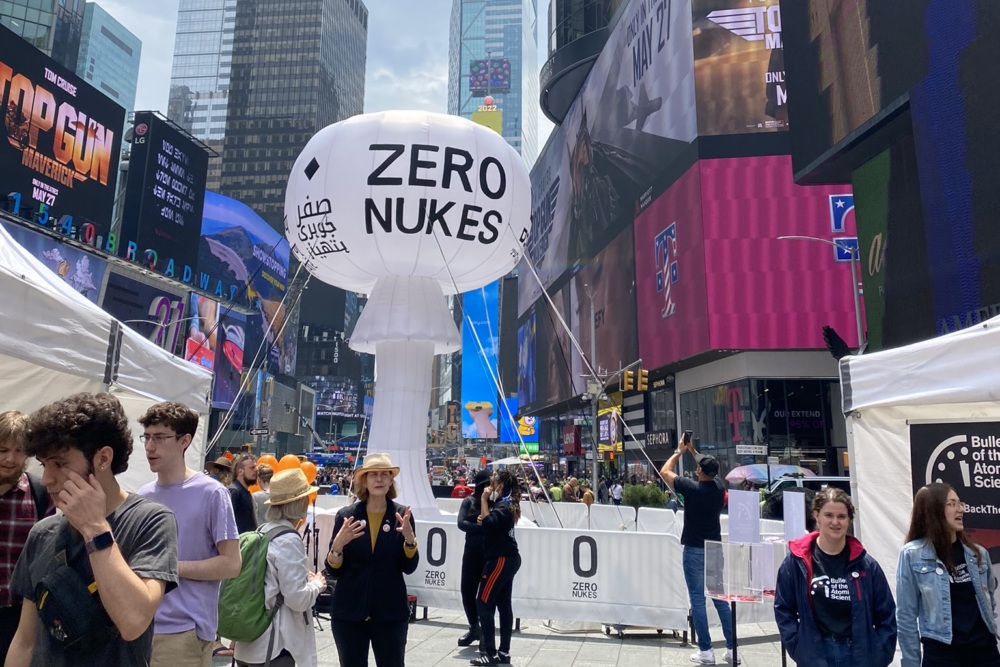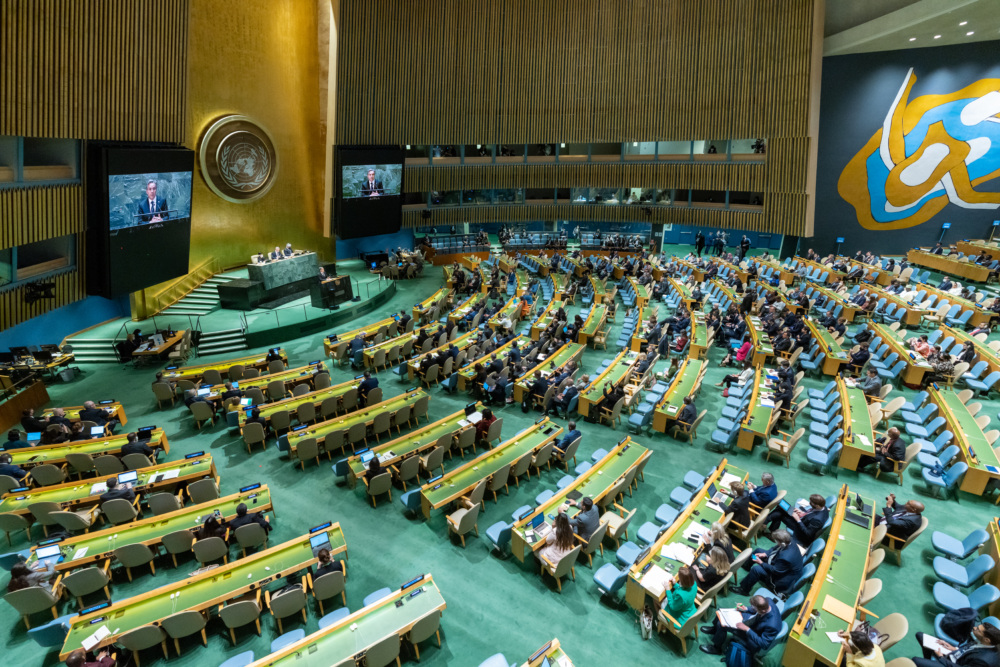
Carla Montilla
Former Intern, NTI
Atomic Pulse
During the summer of 1945 in the New Mexico desert, the United States tested a nuclear weapon for the first time. Only four years later, the Soviet Union developed and tested its own nuclear weapons, followed by the United Kingdom in 1952, France in 1960, and China in 1964. The fear of rapid nuclear weapons development prompted President Kennedy in 1960 to say that he worried the number of countries with nuclear weapons would grow to 10 by 1970 and to as many as 15 or 20 by 1975. Luckily, his projection turned out to be wrong. Today, there are nine nuclear-armed states. How did the world manage to alter the proliferation trajectory that President Kennedy predicted?
Author and nuclear expert Rebecca Davis Gibbons explores the creation of the nuclear non-proliferation regime and steps taken to ensure that as many countries as possible continue to adhere to it in her new book, The Hegemon’s Tool Kit: U.S. Leadership and the Politics of the Nuclear Nonproliferation Regime. She shared this important history in an NTI seminar with NTI Co-Chair and CEO Ernest J. Moniz and Eric Brewer, a senior director with NTI’s Nuclear Materials Security Program.
Gibbons explained that the story begins back in 1965, when the United States and the Soviet Union realized that widespread development of weapons of mass destruction posed a significant security threat for them and for the rest of the world as well. This prompted them to draft and negotiate the Treaty on the Non-Proliferation of Nuclear Weapons (NPT) in 1968. Under the terms of the treaty, the five countries that already had tested nuclear weapons—the United States, the United Kingdom, Russia, China, and France—would be allowed to keep them but would be required to pursue disarmament; countries without nuclear weapons would agree not to acquire them; and all countries could access nuclear materials for peaceful purposes but had to sign agreements to ensure the nuclear materials were not diverted to weapons programs. Currently, all but five countries are part of the treaty.
The NPT was an essential step in building global consensus on non-proliferation, but it was just the beginning, Gibbons said. The real creation of a robust nuclear non-proliferation regime came from the pacts and agreements that followed, as well as the institutions created to prevent the spread of nuclear weapons. “As new dangers emerged and as weaknesses in the NPT became apparent, the U.S. has worked with other countries to forge new pacts to bolster the NPT’s goals and to fill gaps in the treaty’s effectiveness,” Gibbons said. “This web of agreements and activities is what I describe as [the] nuclear non-proliferation regime.”
Over decades, the regime has survived amid changing global power dynamics and as several countries have violated or left the NPT, among other challenges. Gibbons credits the United States’ influence in the geopolitical arena as key to the regime’s success and staying power. As the global hegemon and the most materially powerful country, the United States has been able to incentivize and coerce other countries to ensure they adhere to the regime. The United States has also undertaken significant diplomatic efforts to make the NPT and other non-proliferation agreements universal and has encouraged all countries to join such agreements, even countries without interest or capacity to develop nuclear weapons at the time.
Gibbons noted that the non-proliferation regime is not perfect—there will continue to be challenges to it, and it will only become more difficult for the United States to manage over time. Global order-making requires more than great powers creating institutions; the rules need to be promoted year after year, stable communications need to be maintained across changing administrations, and adaptations need to be agreed to and implemented as issues evolve. As challenges to U.S. power and influence grow, the United States will have a harder time convincing other countries to adhere to the non-proliferation regime that it has helped create and lead. Gibbons sees this trend as a key threat to the non-proliferation regime, particularly in the context of China. China’s presence on the global stage is exponentially greater than it was when the NPT was negotiated, and Gibbons believes that the United States will need to work with China to combat the proliferation of nuclear weapons and create safeguard standards for the future.
One dynamic that might influence how the United States navigates these challenges is public opinion. Gibbons explained that public opinion is an important force when it comes to non-proliferation issues, as is evident now with the war in Ukraine and Vladimir Putin’s nuclear threats. The influx of nuclear threats in the news has significantly raised the level of awareness and fear around nuclear weapons, and this could translate into political action, Gibbons said: “When people are concerned, there is greater chance of leaders being concerned and working on these issues.”
Sign up for our newsletter to get the latest on nuclear and biological threats.
From May 17-24, 2022, Times Square Arts presented Amnesia Atómica NYC, a public exposition commissioned by the Bulletin of Atomic Scientists centered around artist Pedro Reyes’s ZERO NUKES: a 30 foot tall, mushroom cloud-shaped inflatable sculpture.
As officials prepare to meet in Vienna for the 2023 PrepCom, they should consider some of the key themes that have emerged from NTI’s Global Enterprise to Strengthen Non-Proliferation and Disarmament.
Considering the current nuclear landscape, the power of Christopher Nolan’s film and the moral and ethical questions raised by J. Robert Oppenheimer’s work, movie viewers may be motivated to act to advocate for a world without nuclear weapons. But how?


